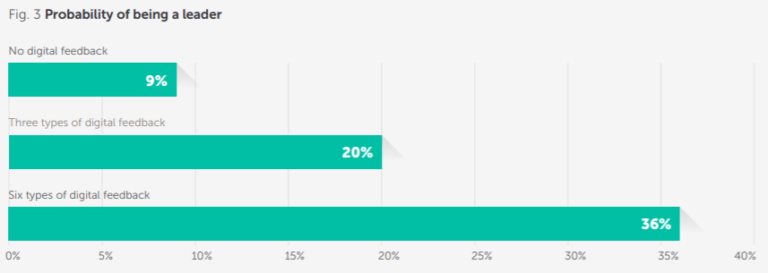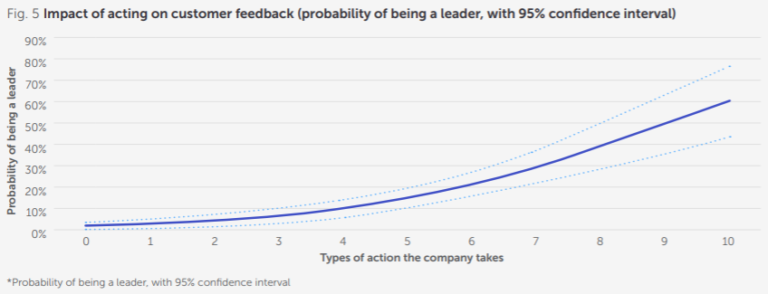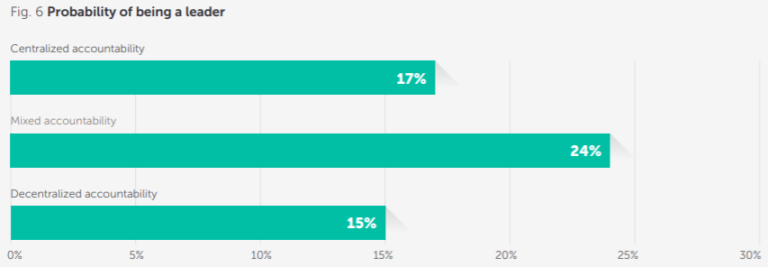30-Second Summary
To understand why some B2B organizations are navigating CX challenges with greater success than others, Medallia surveyed US-based B2B professionals whose companies collect and use customer feedback. Here are the key takeaways:
- Digital channels are giving B2B organizations direct access to the opinions and reflections of their customers. The more types of feedback collected by businesses, the higher probability they are of being a CX leader.
- The collection of a range of types of feedback from customers is the first step towards a successful CX strategy for B2Bs. But organizations need to be proactive in using this information to improve their practice.
- Companies that hold more of their leaders accountable for CX achieve better outcomes.
A new report published by customer experience (CX) management platform provider Medallia, in partnership with Accenture, provides fresh analysis on how US B2B businesses are performing when it comes to giving their customers the best experiences.
Setting the standard for CX in B2B released this month delves into the things that distinguish ‘leading companies from the laggards.’ I’ve checked out the report and reflect on these three key practices below:
1) Leaders leverage digital listening channels and focus on the digital experience
Customer experiences in 2019 are happening online, offline and increasingly across a mixture of both.
Digital channels such as websites, mobile apps and social media are giving B2B organizations direct access to the opinions and reflections of their customers. They can be used to gather feedback very shortly after the experience is finished and sometimes even when it is still ongoing – such as in the case of a marketing event. Importantly, it is ever-easier for customers to share feedback when it is still fresh in their mind.
The types of feedback leading B2B businesses are collecting include:
- Ease of finding information on the website
- Quality of onsite UX
- Value of online customer service
- Ease and availability of purchasing
Crucially, according to Medallia, the more types of feedback collected by businesses, the higher probability they are of being a CX leader.
2) Leaders use customer feedback to spur action across the organization
The collection of a range of types of feedback from customers is the first step towards a successful CX strategy for B2Bs. But organizations need to be proactive in using this information to improve their practice.
Some of the ways in which B2B businesses are taking action include:
- Identifying trends
- Resolving specific issues
- Contacting customers for follow-up
- Making improvements on products/services
- Identifying opportunities to introduce new products/services/practices
The more types of action a company takes, the more likely they are to lead the field. B2Bs who put 10 types of action into practice are 40 times as likely to be a leader.
3) Leaders diversify CX accountability
The third way Medallia sees B2B CX leaders operating differently to those grouped as followers or laggards is by how they organize customer experience accountability.
This is relevant both in terms of business teams, as well as the number and diversity of senior executives who can be identified as having some CX responsibility too.
The report highlights three ways in which accountability is set-up in US B2B organizations:
- Centralized accountability – refers to when responsibility falls on a single team.
- Decentralized accountability – when accountability belongs to each unique business unit.
- Mixed accountability – where accountability is shared between a centralized team dedicated to the CX program and other business units.
Companies that use a mixed model are around 50% more likely to be CX leaders. Currently 48% of B2Bs are operating in this way.
Additionally, the report also found that companies that hold more of their leaders accountable for CX achieve better outcomes. For example, those that hold more than five of their executives accountable are about 65% more likely to be CX leaders than those that assign these responsibilities to fewer than three.
Takeaways: How can laggards and followers become leaders?
Setting the standard for CX in B2B is an insightful report and clearly lays out how B2Bs can up their customer experience game.
The starting point for any B2B organisation is to make sure there are channels open during and immediately after when their customers are interacting. Digital channels such as social media and mobile apps are improving this connectivity – and they allow for customers to give a range of varying types of feedback quickly and easily.
But businesses must, then, take action on this feedback. They must be proactive in resolving issues and communicating with their customers before, during and after this process. B2Bs must also look for trends in opinion and issues reported by customers, and they should be tweaking products/services/practices as soon as they possibly can.
The most successful B2Bs in CX also have a mixed model of accountability. To quote directly from Medallia, ‘allowing different business units some control over how CX activities are managed may encourage innovation and allow for different operating needs within a business.’
By ensuring that a greater diversity of senior executives – CEOs, CMOs, Head of Product – are accountable for CX too, B2Bs can better identify issues in different business areas and sooner make the changes necessary.
source https://www.clickz.com/b2b-three-key-practices-separate-cx-leaders-from-the-rest-of-the-pack/258178/



No comments:
Post a Comment